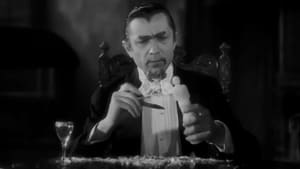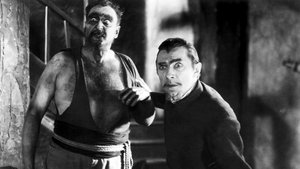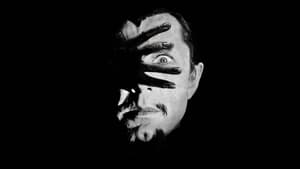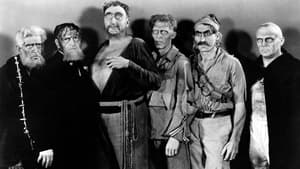Video Sources 0 Views
- Watch trailer
- White Zombie 1932 Colorized

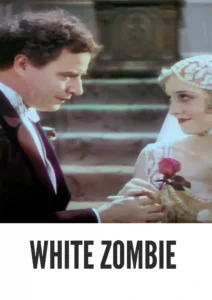
Download White Zombie (1932) Colorized HD | Bela Lugosi | Horror Classic
Synopsis
Table of Contents
ToggleZombies, Voodoo, and a Mad Scientist: White Zombie (1932) in Stunning Color

Enter the eerie world of early zombie cinema with White Zombie, a chilling horror film from 1932, now beautifully colorized for a uniquely terrifying viewing experience. Starring Bela Lugosi, this movie delivers a suspenseful narrative of voodoo, love, and the living dead in Haiti. Perfect for classic horror enthusiasts and those seeking a taste of Lugosi’s iconic performances, this HD download brings a groundbreaking piece of horror history to your screen.
White Zombie Storyline: A Descent into Darkness
White Zombie tells the story of a young couple, Madeline and Neil, who arrive in Haiti to be married. However, their happiness is threatened by Charles Beaumont (Robert Frazer), a wealthy plantation owner who desires Madeline for himself. In his obsession, Beaumont seeks the help of Murder Legendre (Bela Lugosi), a sinister voodoo master who turns Madeline into a zombie.As Madeline becomes trapped in a lifeless state, Neil is determined to save her from Legendre’s control. The film follows Neil’s desperate journey to uncover the secrets of voodoo and confront Legendre, leading to a thrilling and macabre climax. White Zombie explores themes of obsession, the supernatural, and the dark side of human desires, solidifying its place as a landmark in the horror genre.
Movie Cast
The film features a memorable cast of actors who bring this haunting story to life:
- Bela Lugosi as Murder Legendre
- Madge Bellamy as Madeline Short Parker
- Robert Frazer as Charles Beaumont
- John Harron as Neil Parker
Movie Genre
White Zombie is a horror film, blending elements of gothic horror with the emerging zombie subgenre. Its atmospheric setting, supernatural themes, and focus on suspense and terror make it a classic example of early horror cinema.
Historical Context: Early Horror and Bela Lugosi
Released in 1932, White Zombie is significant for its early depiction of zombies in film, predating many of the more widely known zombie movies that followed. Bela Lugosi’s performance as Murder Legendre is particularly notable, adding to his legacy as one of the most iconic figures in horror cinema. The film was produced during a period when horror films were gaining popularity, and White Zombie contributed to the development of the genre’s conventions and themes.
Colorization Details
This colorized version of White Zombie has been carefully restored using modern digital techniques, enhancing the visual experience while retaining the film’s original eerie atmosphere. The colorization process involved detailed analysis of the original black and white footage, with colors chosen to complement the mood and setting of each scene. Advanced algorithms were used to ensure a natural and consistent color palette, bringing new life to the characters and environments. While the artistic choice to colorize black and white films can be debated, it offers modern audiences a new way to engage with classic cinema, potentially preserving these films for future generations.
Technical Details
- Director: Victor Halperin
- Screenplay: Garnett Weston
- Story: Garnett Weston
- Cinematography: Arthur Martinelli
- Edited by: Clarence Kolster
- Production Company: Halperin Productions
- Distributed by: United Artists
- Runtime: 69 minutes
Technical Specifications
- Download Format: MP4
- Resolution: HD (1080p)
- Compatibility: Compatible with most devices, including smartphones, tablets, computers, and smart TVs.
Reviews and Critical Reception
White Zombie (1932) is recognized as a pioneering film in the zombie genre, noted for its atmospheric visuals and Bela Lugosi’s captivating performance. While it has received mixed reviews over the years, it remains a significant and influential work in the history of horror cinema. As one of the earliest zombie films, White Zombie offers a unique glimpse into the origins of a genre that continues to captivate audiences today.
FAQs
- Q: What is White Zombie about?
- A: White Zombie is a horror film about a man who seeks the help of a voodoo master to turn a woman into a zombie.
- Q: Is White Zombie (1932) a well-known Bela Lugosi film?
- A: Yes, White Zombie is one of Bela Lugosi’s notable roles, contributing to his iconic status in the horror genre.
- Q: Is this version of White Zombie colorized?
- A: Yes, this version has been professionally colorized to enhance the viewing experience.
- Q: What makes White Zombie interesting for horror fans?
- A: White Zombie is a landmark film in the zombie genre, showcasing early techniques and themes that have influenced later horror movies.
- Q: What is the download format?
- A: The download format is MP4, which is compatible with most devices.
- Q: What resolution is the download?
- A: The resolution is HD (1080p), providing a high-quality viewing experience.
Download Now in HD!
Watch White Zombie Today!
